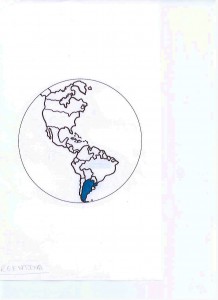ARGENTINA
A. THE COUNTRY
The Argentine Republic, in South America, is Latin America’s second
largest country. There is one federal district and 23 provinces. The
Falkland Islands are claimed by Argentina but remain under British rule.
The government is a federal presidential republic. Democracy and a
recovering economy over the past decade has aided stability but has not
sufficiently reduced poverty and unemployment. As many as 500,000 live
in slums in and around the capital, Buenos Aires. Argentina has
abundant natural resources and a highly educated workforce.
Agricultural products, particularly beef, soybeans, wheat and corn are
economic mainstays.
B. THE PEOPLE
The population is ~40,666,000 and the official language Spanish.
~79.1% are Hispanic (white Argentinean mainly, also Mestizo/Criolloa,
Uruguayan, other Latino nationalities, ~1 million illegal immigrants
from other Latin American countries), ~9.8% European, ~7.1% Amerindian,
~3.3% Middle Eastern, ~0.7% Asian.
C. RELIGIONS AND CHRISTIANITY/PENTECOSTALISM
The Catholic Church has enjoyed good relations with government but, more
recently, tensions have increased with increasing freedom for and
recognition of religious minorities. Evangelicals enjoy respect and
freedom. ~89.28% claim to be Christian, ~8.68% Non-religious, ~0.75%
Muslim, ~0.55% Other, ~0.51% Jewish (mostly in Buenos Aires, it is one
of the world’s largest Jewish communities), ~0.12% Animist, ~0.07%
Buddhist, ~0.03% Baha’i, ~0.01% Hindu.
In the Christian category:
~86.98% are Catholic, ~6.32% Protestant, ~5.52% Independent, ~0.43%
Orthodox, ~0.05% Anglican.
There are large numbers affiliated with ‘marginal’ groups originating in
western society at ~1.87% of the population.
Evangelicals represent ~9.1% of the population.
Charismatics represent ~17.4% and of those ~7.1% are Pentecostals.
Donna Siemens
References:
http://en.wikipedia.org
Operation World, Jason Mandryk. Colorado Springs: Biblica Publishing, 2010.

